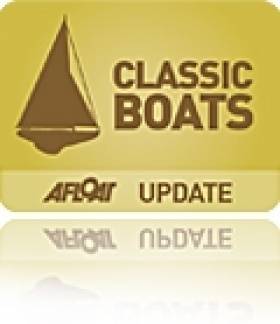Displaying items by tag: 1926
Unique footage of 1926 Dun Laoghaire Regatta Uncovered
Here's a unique glimpse of a post World War One Dun Laoghaire Regatta in rare newsreel recently archived by British Pathe (below). The shots taken on August 2nd 1926 show a mixture of long shots of yachts sailing across Dublin bay. There's definitely lovely shots of Dublin Bay 21s enjoying a tight race, a brave gybe by a Dublin Bay 25 at the harbour mouth plus shots of some Howth 17s.
There's panning shots of in harbour rowing races and high angled shots of men diving off the side of a boat and into the harbour. The swimmers race the length of an area cordoned off by rowing boats with spectators watching from the boats. There is also a shot of women's swimming race and some diving too.
We'd like your observations on these shots, particularly any details of the large committee boat dresssed overall. Leave your comments below. Enjoy.
Scroll down for the clip.
























































